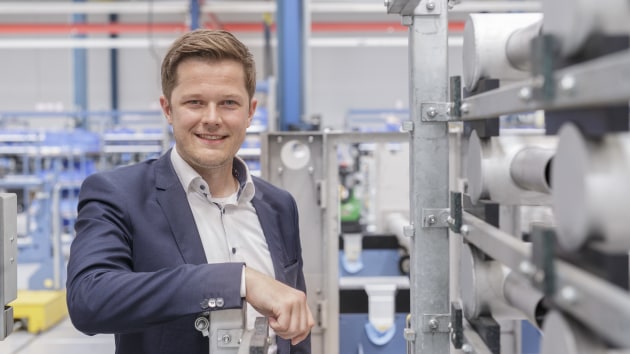With the application of 3D software, the KHS Group now provides a timely virtual overview of all newly procured technologies at the offer stage.
With it, the systems provider can illustrate in detail, and in advance, how a client’s potential new line or single machine can be integrated into the production environment, taking all prevalent conditions on-site into account.
By making a full switch to the 3D planning method, KHS is successfully expanding its portfolio of reliable services.
Unnecessary loops in the planning process, and consequently additional costs, are thus avoided early on.
“Depicting machinery in 3D helps customers to pinpoint any geometric interference during the early offer phase, which improves planning security, as any spatial conflicts in the production shop are recognised and corrected right from the start,” said Patrick Burger, head of plant design at KHS.

“We show customers how the line or machine fits into their existing environment. If required, we include the operators in the advance planning process, and show them how they can later move around between the machines. Their feedback is of great value to us and enables us to devise an optimum layout.”
The system depicts the relevant machines and conveyor elements in greater detail than in the previous 2D variants, which means that production environments spread out across several floors, or located in extremely confined spaces, can be simply and clearly visualised.
Also, 3D line design can be applied to all machines in the KHS portfolio, regardless of the container or beverage segment.
To further improve planning security, KHS offers laser scans that can be easily integrated using the new software.
Here, a 360-degree camera set up on a tripod creates a realistic, practically consistent, photogenic image of the relevant production environment.
“These individual images are then superimposed, which creates what’s known as a scatterpot that takes all geometries into account. Interfaces and disruptive elements are reliably detected,” Burger explained.
“This is particularly advantageous when integrating new systems into parts of buildings that already contain machinery, as it prevents possible collisions with existing equipment. Moreover, the use of 3D models is also hopeful to further processes."
According to Burger, customers are increasingly requesting rendered images for system visualisation so that they can display and process live data from their MES on a production monitor.
“This enables plant operators to track what’s happening where on the line in real-time, and to see how high the current output is, for instance. We can provide these images as an option,” said Burger.
In addition, 3D data can be used for the purpose of building information modelling (BIM), which describes a networked planning method in which all assets – from data on the building through piping and ventilation systems, to the energy supply, and ultimately, the filling line – can be compiled and displayed in a single line design model.
“We have quite a bit of experience with BIM projects. We’ve had plenty of very positive response regarding the data quality here, for example,” he added.
“Our optional support program not only includes the provision of this data in various exchange formats, but also enables plant operators to take part in regular BIM coordination meetings.”
Another advantage highlighted with 3D planning has to do with the use of mobile VR goggles, which according to Burger, is particularly beneficial in confined spaces, as it shows where and how operators can move from machine to machine.







